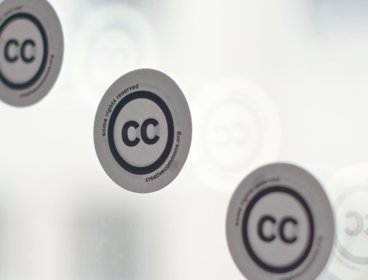By Alison Blunt, Queen Mary University of London, Madeleine Hatfield, Yellowback and Fiona Nash
There are many important ethical issues to consider in conducting research and these do not stop when it comes to writing up research for publication. In fact, publishing brings new considerations and issues. Publishers – like departmental or institutional ethics boards – may ask you to affirm that the research has been conducted in an ethical manner and there may be questions to consider such as including the identity of participants and the kinds of empirical material reproduced, as well as sensitivities around making research publicly accessible.
New topics that become particularly important in writing up your research include the acknowledgement of all parties involved in the research and writing. Collaboration and co-authorship is common in geography and can take a number of different forms. Sometimes each of the co-authors writes different sections of an article or book and works together to develop the argument as a whole. Sometimes one author writes draft and others contribute and comment. If different authors contribute equally to the final article, it is usual practice for their names to appear in alphabetical order. In other cases there is a clear lead author who, in geography, is commonly named first in the list of authors.
From the outset, it is important to be clear about your responsibilities as a co-author, whether in terms of drafting the article or responding promptly to a draft that another co-author has circulated. It is also important to be clear about the contributions of different authors. You will often need to document the nature and extent of your contribution as co-author, whether you are writing a PhD by publication, or applying for jobs, tenure or promotion.
Other, non-author, contributors are usually included in a separate acknowledgements section at the end (in journal articles) or beginning (common in book formats) (though see Participatory approaches to authorship in the academy). As well as the wider research team, assistants, participants, reviewers and institutional settings, any funding should be acknowledged. The latter is increasingly mandated by research funders so failure to do this may harm your relationship with them. It is also good practice to acknowledge the contributions of referees and the editors when they have helped to improve your publication.
On submitting a manuscript for publication, you will invariably be asked to state that the work is your own, has not been previously published and is not under consideration elsewhere. Many academic monographs include material that has been revised or reproduced from other publications such as journal articles, but the right to reproduce material must be secured from the publisher of the original journal article(s), and correctly acknowledged. You cannot usually re-publish chapters from a monograph in subsequent journal articles because journals require articles to be original and unpublished (this is something to consider in terms of your publication strategy – see Thinking strategically about publishing).
One consequence of the pressure to publish high numbers of publications is finely slicing research contributions although it is – or should be – tempered by assessments of the quality, not just quantity, of those outputs. This can lead to research articles lacking a sufficiently original contribution; and also to the temptation to reproduce particular parts of texts, especially theoretical and methodological introductions. While it is recognised that some information might be repeated across published outputs, it is not acceptable to re-use direct excerpts without acknowledging their original publication elsewhere, just as when quoting from another person’s work. To re-use your own text without acknowledgement is self-plagiarism and is a breach of authorship ethics in terms of both the original and subsequent publications. Self-plagiarism is often picked up in the peer-review process by referees or by software such as iThenticate (from the same company as the student submission checker Turnitin) integrated with the online submission and review systems used by many journals. This does not mean researchers cannot disseminate or get feedback on publications through other channels before having a piece of writing accepted for publication. Working papers, for example, are an established way of doing this (although see Thinking strategically about publishing for a note of caution). However, best practice is to update these draft documents with information on where they have been submitted. Later, text should be inserted which includes an acknowledgement that the paper has been accepted in the journal, the full citation for the paper and a link to the final published article. Do check your publishers’ copyright agreement because practices vary.
Research Ethics
As an author and researcher you should ensure that the highest ethical standards in the conduct of research are upheld by complying with ethical guidance issued by your institution or funder as well as the best practice guidelines appropriate to your sub-discipline. Clear statements are provided by the Economic and Social Research Council, the Natural Research Council and the Arts and Humanities Research Council.
Publication Ethics
You should also ensure that you adhere to best practice on publication ethics. You are expected to ensure that you submitted research is original, fully attributed and does not contain material that is untrue, inaccurate or plagiarized. For more information on publication ethics, see the Committee on Publication Ethics’ (COPE) website (http://publicationethics.org/).
About this guide
Publishing is a crucial, but sometimes daunting and unexplained, part of academic life. All academic geographers are supposed to do it, but there are few formal guidelines about how best it should be done. Many of us discover how to publish by trial and error or through the mentoring and support of colleagues. Publishing and academic landscapes also change, presenting new challenges to established academics. The publishing and getting read guides have four main aims: to provide clear, practical and constructive advice about how to publish research in a wide range of forms; to encourage you to think strategically about your publication profile and plans; to set out some of the opportunities and responsibilities you have as an author; and to support you in getting your published research read.




